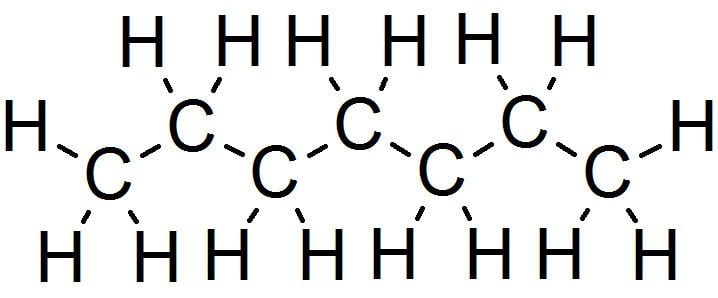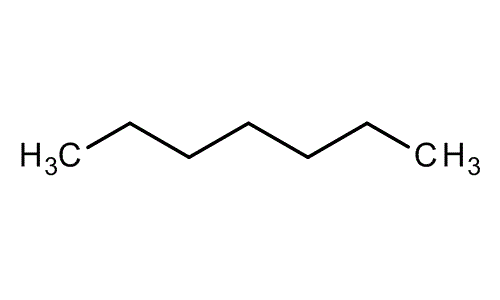Formula C7H16 Density 684 kg/m³ | Related alkanes Boiling point 98.42 °C Molar mass 100.21 g/mol | |
 | ||
Heptane c7h16 lewis dot structure
n-Heptane is the straight-chain alkane with the chemical formula H3C(CH2)5CH3 or C7H16. When used as a test fuel component in anti-knock test engines, a 100% heptane fuel is the zero point of the octane rating scale (the 100 point is a 100% iso-octane). Octane number equates to the anti-knock qualities of a comparison mixture of heptane and isooctane which is expressed as the percentage of isooctane in heptane and is listed on pumps for gasoline (petrol) dispensed globally.
Contents
- Heptane c7h16 lewis dot structure
- Isomers of heptane
- Uses
- Octane rating scale
- Isomers and enantiomers
- Health risks
- References

Isomers of heptane
Uses

Heptane (and its many isomers) is widely applied in laboratories as a non-polar solvent. As a liquid, it is ideal for transport and storage. In the grease spot test, heptane is used to dissolve an oil spot to show the previous presence of organic compounds on a stained paper. This is done by shaking the stained paper in a heptane solution for about half a minute.

Aqueous bromine may be distinguished from aqueous iodine by its appearance after extraction into heptane. In water, both bromine and iodine appear brown. However, iodine turns purple when dissolved in heptane, whereas the bromine solution remains brown.

Heptane is commercially available as mixed isomers for use in paints and coatings, as the rubber cement solvent "Bestine", the outdoor stove fuel "Powerfuel" by Primus, as pure n-heptane for research and development and pharmaceutical manufacturing and as a minor component of gasoline.
Octane rating scale

n-Heptane is defined as the zero point of the octane rating scale. It is undesirable in gasoline, because it burns explosively, causing engine knocking, as opposed to branched-chain octane isomers, which burn more slowly and give better performance. It was originally chosen as the zero point of the scale because of the availability of very high purity n-heptane, unmixed with other isomers of heptane or other alkanes, distilled from the resin of Jeffrey pine and from the fruit of Pittosporum resiniferum. Other sources of heptane and octane, produced from crude oil, contain a mixture of different isomers with greatly differing ratings, and do not give as precise a zero point.
Isomers and enantiomers
Heptane has nine isomers, or eleven if enantiomers are counted:

Health risks
Acute exposure to heptane vapors can cause dizziness, stupor, incoordination, loss of appetite, nausea, dermatitis, chemical pneumonitis, or unconsciousness.
